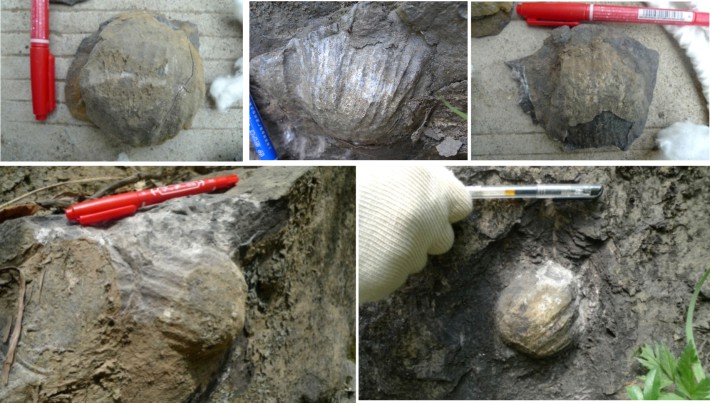The gigantic Gigantoproductus-bearing brachiopod fauna is one of the most distinct marine benthic faunas in the Early Carboniferous in terms of its huge size, extremely thick shell, and delicate costation. The fauna is among the most characteristic taxon that marked the middle and late Mississippian and of much usefulness in stratigraphy and palaeobiogeography.
In a recent paper, Dr. QIAO Li and Prof. SHEN Shuzhong from Nanjing Institute of Geology and Paleontology, Chinese Academy of Science have conducted a research on the stratigraphic and paleogeographic distributions of the Gigantoproductus fauna, along with its diversity change and discussed the evolutionary turnover of the Gigantoproductus faunas in association with the global tectonic and paleoclimatic changes.
The investigation into the spatial and temporal distributions indicates that Gigantoproductus was originated and migrated mainly in the circum Paleotethys region in the tropical and subtropical zones, and favored a relatively shallow shelf environment with high energy and warm water condition with little thermal tolerance. The waxes and wanes of the Gigantoproductus faunas temporally coincided with the paleoclimatic shift from greenhouse to icehouse stage in the late Visean and early Serpukhovian. And the final extinction of these gigantic brachiopods in the late Serpukhovian implies tropical cooling towards the late Serpukhovian by the expansion of the LPIA glaciers.
This research is supported by the National Nature Science Foundation of China.
Reference: Li Qiao, Shu-Zhong Shen, 2015. A global review of the Late Mississippian (Carboniferous) Gigantoproductus (Brachiopoda) faunas and their paleogeographical, paleoecological, and paleoclimatic implications. Palaeogeography, Palaeoclimatology, Palaeoecology, 420: 128–137.

Specimens of Gigantoproductus collected from South China.

Fossil localities of Gigantoproductus (upper) and palaeogeographic map showing the genus distributions (340 Ma) (lower).

